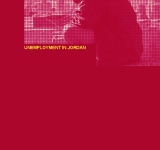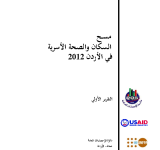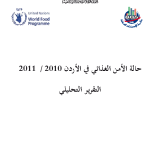Tafileh
The tourism sector assessment report examines critical questions related to Jordan's best opportunity areas for tourism development growth that will result in increasing tourism receipts;; private-sector investment in tourism;; and tourism-related employment. The report identifies global trends;; best practices;; and benchmarks shaping tourism demand and competitiveness. It also suggests approaches for expanding tourism in key Jordan governorates and secondary destination in ways that benefit local communities. According to the assessment;; Jordan is well-positioned to move from a regional;; multi-country tourist destination to a stand-alone destination with a portfolio of tourism products with year-round appeal for foreign and domestic visitors;; and this will require a long-term commitment from both public and private stakeholders. It suggests collaboration between Jordan's government and private sector;; localized and inclusive economic development implementation strategies and increase in the supply of skilled tourism workforce professionals.
This pilot study report was initiated by the European Training Foundation (ETF);; in close cooperation with the National Center for Human Resources Development (NCHRD) in Jordan;; in the framework of the ETF multiannual project Observatory Function Development in Jordan. The focus of this report is unemployment. However;; considering that unemployment information in itself should not be used or analysed in isolation from other indicators or data;; the report begins by providing an overview of the general labour market situation in Jordan. After the main data on employment by sector;; age;; gender and level of education are presented;; on the basis of the available information;; the specific cases of non-Jordanian employees and employment in the informal economy are highlighted as topics requiring special attention in the Jordanian labour market. In conclusion;; two groups of recommendations are proposed: (i) technical recommendations to main information providers for improving the quality of the information collected;; and (ii) a set of policy recommendations for tackling unemployment. These recommendations are intended to support policymakers in their commitment and willingness to adapt both the formal and informal education and training system and the whole labour market in Jordan.
يتضمن هذا التقرير تحليلاً موسعاً ومتكاملاً لمؤشرات الفقر بالاستناد الى بيانات مسح نفقات ودخل الأسرة لعام 2008;; الذي نفذته دائرة الاحصاءات العامة على أربع جولات ميدانية استمرت سنة;; والذي انتهى العمل به مع نهاية الربع الأول لعام 2009. وبناءاً على بيانات هذا المسح تم اعداد تقريرين سابقين: الأول كان فيه عرض للنتائج الرئيسية للمسح والآخر تناول قياس مؤشرات الفقر باستخدام منهجية السعرات الحرارية المعتمدة من قبل البنك الدولي ومقارنتها عبر الزمن بالأسعار الثابتة. وبناءاً عليه تم تم اعداد هذا التقرير التحليلي لحالة الفقر في الأردن;; وذلك بمشاركة العديد من الجهات الوطنية المعنية بالفقر. وكما يتناول التقرير تحليلاً للتدخلات الحكومية المباشرة بالأسعار الجارية خلال عام 2008 في الحد من ظاهرة الفقر.
يتمثل الهدف الرئيسي من هذا المسح في توفير بيانات شاملة وتقديرات موثوقة للمؤشرات الديموغرافية مثل الإنجاب والوفاة وتنظيم الأسرة;; وصحة وتغذية الأم والطفل بوصفها أداة لتقييم البرامج والسياسات السكانية والصحية الموجودة حالياً. تم اعتماد منهجية المسح باستخدام استمارة للأسرة واستمارة أخرى فردية;; حيث تم مقابلة 15000 أسرة وأكثر من 11000 سيدة سبق لهن الزواج وعمرهن 15-49 سنة وذلك من خلال اشهر ايلول الى كانون الأول 2012. ويقدم هذا التقرير بعض النتائج الأولية لمسح عام 2012.
يتضمن نتائج مسح الأمن الغذائي الذي أجرته الدائرة كمسح مصاحب لمسح نفقات ودخل الأسرة والذي نفذ خلال الفترة 1/4/2010 – 31/3/2011 ;; على عينة من الأسر بلغ حجمها حوالي 13 ألف أسرة ممثلة للمستوى الوطني;; الحضر والريف وكافة محافظات المملكة وعلى مستوى القضاء. يهدف هذا التقرير إلى التعرف على حالة الأمن الغذائي في الأردن;; وتحديد مناطق إنعدام الأمن الغذائي والهشاشة على مستوى الأقضية;; كما يمكن من خلال هذا التقرير التعرف على الأوضاع المعيشية لهذه الأسر كالخصائص الديموغرافية والدخل والإنفاق;; مما يساعد صانعي القرارات في استهداف الفئات المحتاجة وتوجيه الأنشطة لبناء شبكة حماية للأمن الغذائي.




